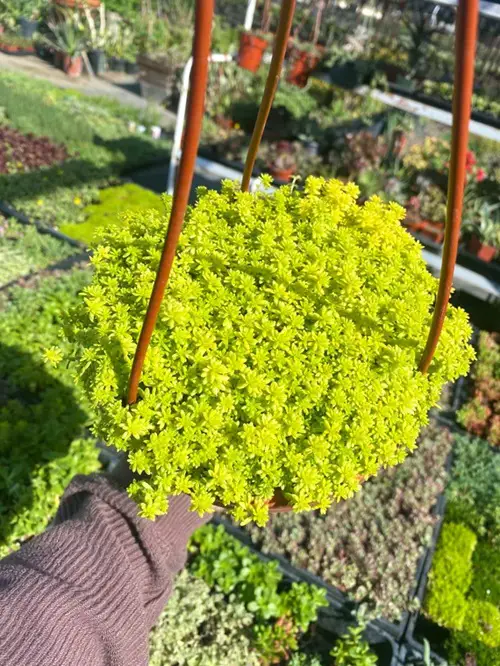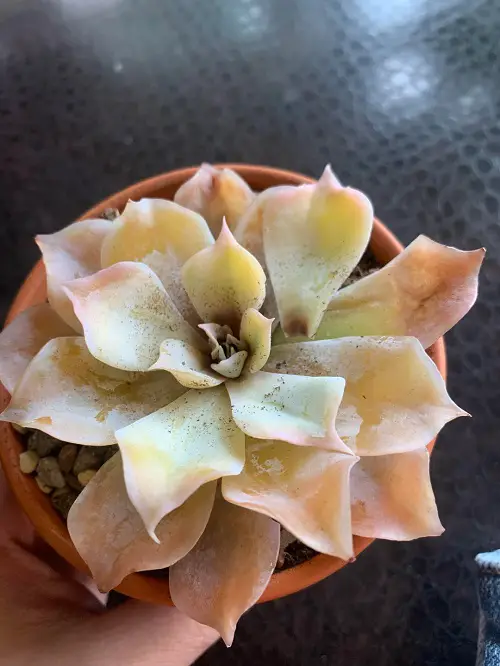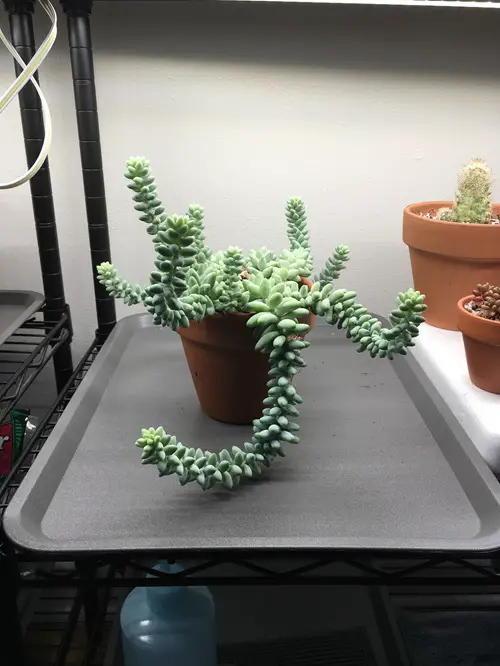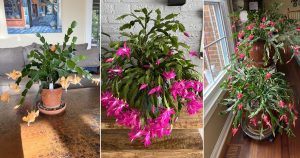Thinking you could water plants at any time of the day, think again! You must avoid watering these succulents in the evening and here’s why?
While you could get away with watering most plants whenever the soil looks dry, not all of them are suited to this practice. For drought-tolerant plants that are sensitive to temperature and humidity changes, there is one practice that you must follow—avoid watering these succulents in the evening. Let’s find out why.
Why You Should Not Water Your Plants In Evening?
Generally, plants tolerate different levels of watering depending on where they are kept. For example, outdoors, plants need less water, as Mother Nature will take over most of that responsibility for you. On the other hand, if you have them in pots, the soil will dry out faster, which means you will have to give them a drink more often.
To avoid any confusion, it’s best to stick to a morning watering routine. This gives the plant enough time to soak up the moisture during the cooler hours of an otherwise long, hot day. Afternoon watering works fine too. But in the nighttime, evaporation slows, which leads water to pool around the plant, hence a perfect environment for fungal and bacterial diseases, and root rot.
Avoid Watering These Succulents in the Evening
1. Stonecrop

Botanical Name: Sedum acre
USDA Zones: 3-9
In their natural habitat, stonecrops are found in sunny locations over limestone hills, rocks, and walls near the sea. Considering its drought-tolerant, succulent nature, you should not only avoid watering it at night (when humidity often spikes to 60-80%) but also hydrate it less than other plants.
This succulent prefers a location with full sunlight in well-draining soil mixes, such as those specifically designed for cacti and succulents.
2. Haworthia
Botanical Name: Haworthia Truncata
USDA Zones: 9-11
Haworthias are like introverts—they love their space and absolutely hate being overwhelmed by water. Their roots are built for quick-draining, sandy soils, and when combined with high nighttime moisture levels, watering them in the evening can create a soggy mess that their roots simply can’t handle.
They like to be in low-light corners, but even in dim spots, they’d appreciate you keeping the watering schedule strictly during daylight hours.
3. Living Stones

Botanical Name: Lithops
USDA Zones: 10-11
True to its name, this small succulent—reaching just six inches in height—resembles stones and rocks. Humid evenings with moisture-heavy air above 70% can lead to condensation around their roots, especially in poorly ventilated spaces. This is their kryptonite, and watering them at night can cause them to rot faster than you’d think.
Caution: Just avoid watering during dormancy (summer and winter), even if they look a bit shriveled. They’re just conserving energy for their active seasons.
4. String of Pearls
Botanical Name: Senecio rowleyanus
USDA Zones: 9-12
String of Pearls stores water in its bead-like leaves so it is particularly sensitive to overwatering. Moisture lingering in the soil overnight can overwhelm its shallow roots, causing them to decay. Always water during the day and ensure its pot has proper drainage holes.
Senecio rowleyanus thrives best when the topsoil feels completely dry, so a “less is more” approach works wonders.
5. Echeveria
Botanical Name: Echeveria elegans
USDA Zones: 9-12
Echeverias are prized for their beautiful rosettes, but they are highly sensitive to overwatering. Nighttime dampness combined with humid air (often 50-90% depending on the region) can turn their roots into a breeding ground for rot and fungi. A little daytime water, when the sun is still shining, keeps them happy and healthy.
Be extra cautious about water pooling in the center of the rosette. This can damage the plant’s crown and even cause it to collapse.
6. Burro’s Tail
Botanical Name: Sedum morganianum
USDA Zones: 9-11
Burro’s Tail is a master of moisture retention, storing water in its fleshy, trailing leaves. However, its shallow roots can’t handle prolonged dampness. Evening watering paired with cooler temperatures can lead to trapped moisture, which the plant finds hard to shake off—literally!
This succulent does best in a hanging planter with excellent airflow to keep the soil dry. Its stems are fragile, so handle the plant carefully to avoid breaking off its leaves.
7. Jade Plant
Botanical Name: Crassula ovata
USDA Zones: 10-11
The Jade Plant is a hardy old soul that forgives the occasional misstep, but nighttime watering is its pet peeve. The cool, moist conditions promote fungal infections and root rot. Let the topsoil dry out entirely before you water, preferably in the morning, so the plant has time to absorb the moisture and dry out.
Caution: Yellowing leaves can be a sign of overwatering, so scale back if this happens.
8. Panda Plant
Botanical Name: Kalanchoe tomentosa
USDA Zones: 9-11
The Panda Plant is an adorable fuzzball, with velvety leaves that protect it from losing moisture. But this same fuzzy surface can trap water droplets, especially in humid evenings, encouraging mold to set up shop. Stick to sparse watering during the day, letting the soil dry out fully in between.
Because of its cute look, it is a popular choice for kids’ gardens, but keep it out of reach of pets as it’s mildly toxic.
9. Flapjack Plant
Botanical Name: Kalanchoe luciae
USDA Zones: 9-12
The Flapjack Plant is all about bold colors and striking shapes, but its roots detest soggy soil. When you water it at night, the combination of cooler air and damp soil can quickly spell trouble, inviting rot and pests. Morning watering ensures the soil has plenty of time to dry out before nightfall.
And, if you want to see those red hues pop, give it plenty of bright, direct sunlight!
By avoiding nighttime watering, you’re helping your plants avoid common pitfalls like rot, pests, and fungi. If you’ve ever battled a case of root rot or have tips to share about keeping your succulents happily growing. Just drop your experiences and ideas in the comments below—let’s grow our succulent knowledge together.















